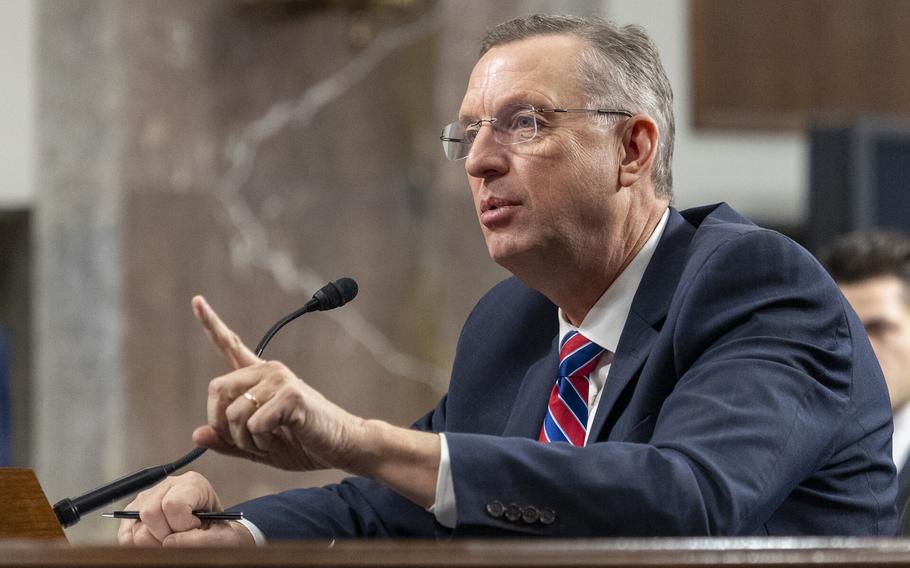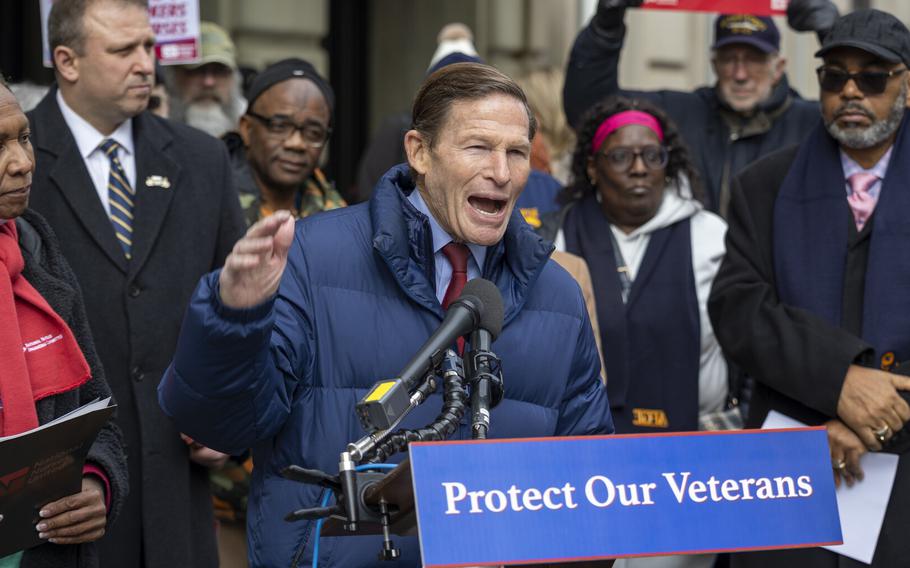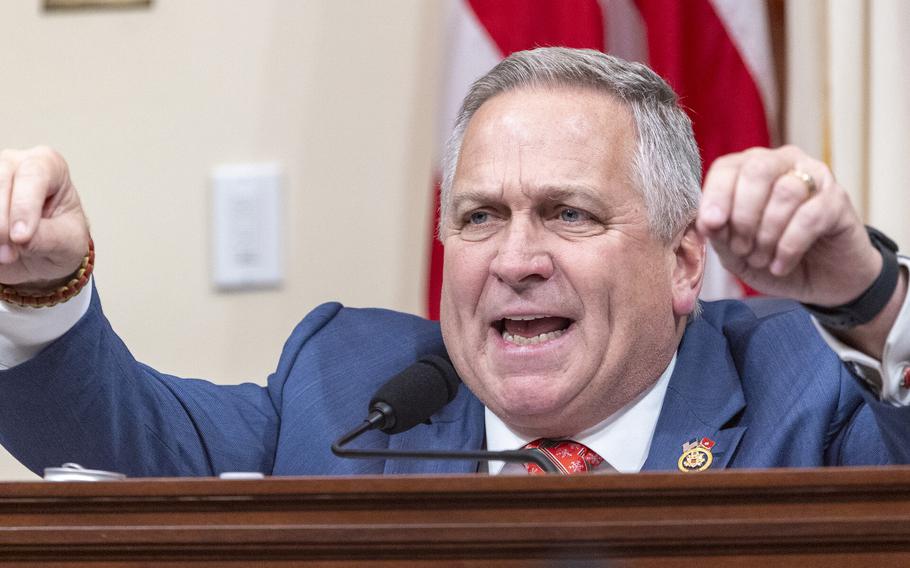
VA Secretary Doug Collins speaks Jan. 21, 2025, during his Senate confirmation hearing in Washington. (Eric Kayne/Stars and Stripes)
WASHINGTON — The Department of Veterans Affairs fired more than 1,000 new employees largely not represented by labor union agreements, as part of a cost-saving move that is expected to save the agency close to $100 million, according to the VA.
The dismissals are effective immediately, the VA said. Employees were informed Thursday night that they no longer have a job with the VA.
Dollars spent on employees’ wages will be redirected to pay for services and benefits for veterans, the VA said in an announcement.
The reduction in VA staff supports President Donald Trump’s plan to downsize the federal government to make it less costly, more responsive and efficient, the VA said.
“VA is refocusing on its core mission: providing the best possible care and benefits to veterans, their families, caregivers and survivors,” the VA said.
But Sen. Richard Blumenthal, D-Conn., who sits on the Senate Veterans’ Affairs Committee, blasted the Trump administration for “attempting to balance the budget on the backs of veterans.”

Sen. Richard Blumenthal, D-Conn., speaks Thursday, Feb. 13, 2025, during a rally outside of the Department of Veterans Affairs headquarters in Washington. The rally was to call on VA officials to stop jobs cuts at the agency. (Eric Kayne/Stars and Stripes)
He said the firings include newly hired doctors, nurses and other medical personnel. A staff shortage already exists for these positions, he said.
“It is reprehensible to target recently hired federal employees — particularly those who have chosen to serve veterans -- solely because they have less due process rights and employment protections than other employees,” Blumenthal said. “It is a massive waste of taxpayer dollars to fire employees the department just invested months into recruiting, vetting, and training.”
Trump also signed an executive order last week directing federal agencies, including the VA, to hire only one worker to replace every four who leave employment.
The VA said there are more than 43,000 probationary employees who continue to work in the department and will not be terminated because their jobs are considered critical for the VA to fulfill its mission, the agency said.
The VA has nearly 475,000 workers and a budget of $469 billion and is the federal government’s second-largest department after the Defense Department.
“At VA, we are focused on saving money so it can be better spent on veteran care,” Doug Collins, the VA secretary, said in a prepared statement. “We thank these employees for their service to VA.”
Collins said the termination of workers will not negatively impact VA health care, benefits or beneficiaries.
Rep. Mike Bost, R-Ill., chairman of the House Veterans’ Affairs Committee, said he has confidence in the decision by Collins.
“I trust that my friend Secretary Collins is the doing the right thing for veterans and taxpayers to effectively right size and reorganize the agency to work better for the men and women it serves,” he said. “I take Secretary Collins at his word when he says there will be no impact to the delivery of care, benefits, and services for veterans with this plan.”

Rep. Mike Bost, R-Ill., makes remarks Dec. 18, 2024, during a House Veterans’ Affairs Committee hearing in Washington. (Eric Kayne/Stars and Stripes)
Workers exempted from termination primarily support the processing and delivery of services and benefits to veterans, the VA said. They also include workers represented by a union’s collective bargaining agreement.
Exempted workers include individuals who chose to resign and accept a buyout offer by the Trump administration that is described as a deferred resignation program. These workers accepted an offer to resign but will continue to receive their pay through September.
Employees terminated had served for less than a year in competitive service appointments and were considered “non-bargaining unit” probationary workers. They also included employees who had worked for the VA for less than two years in an excepted service appointment.
Competitive service is a federal government hiring process similar to the private sector in which an applicant is evaluated based on education, experience, skills and other assessments, according to the Office of Professional Management. Excepted service positions are civil service jobs that are not part of the competitive service. Agencies set their own hiring criteria for these positions.
A bargaining-unit position is a job represented by a labor union, according to USAJobs, the federal government’s official website for advertising employment. Bargaining units include more than half of the jobs in the federal workforce.
At the VA, roughly 80% of workers are bargaining-unit employees, according to the VA.
Non-bargaining unit employees cannot join other workers as union members to negotiate their terms of employment. Non-bargaining unit workers often are supervisors, managers, confidential employees and other professionals involved in personnel work, according to USAJobs.
“These moves will not negatively impact VA health care, benefits or beneficiaries. In the coming weeks and months, VA will be announcing plans to put these resources to work helping veterans, their families, caregivers and survivors,” Collins said.